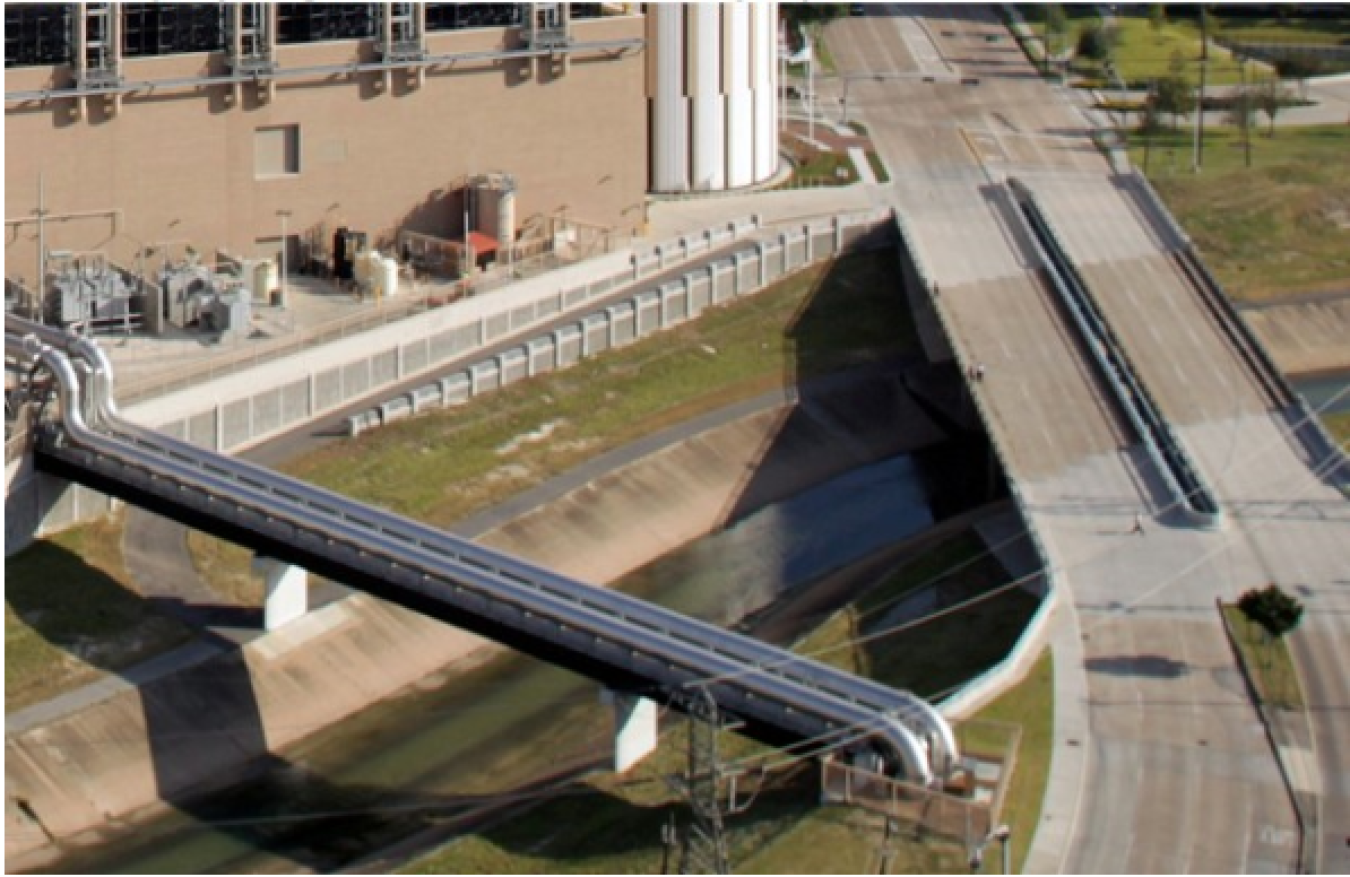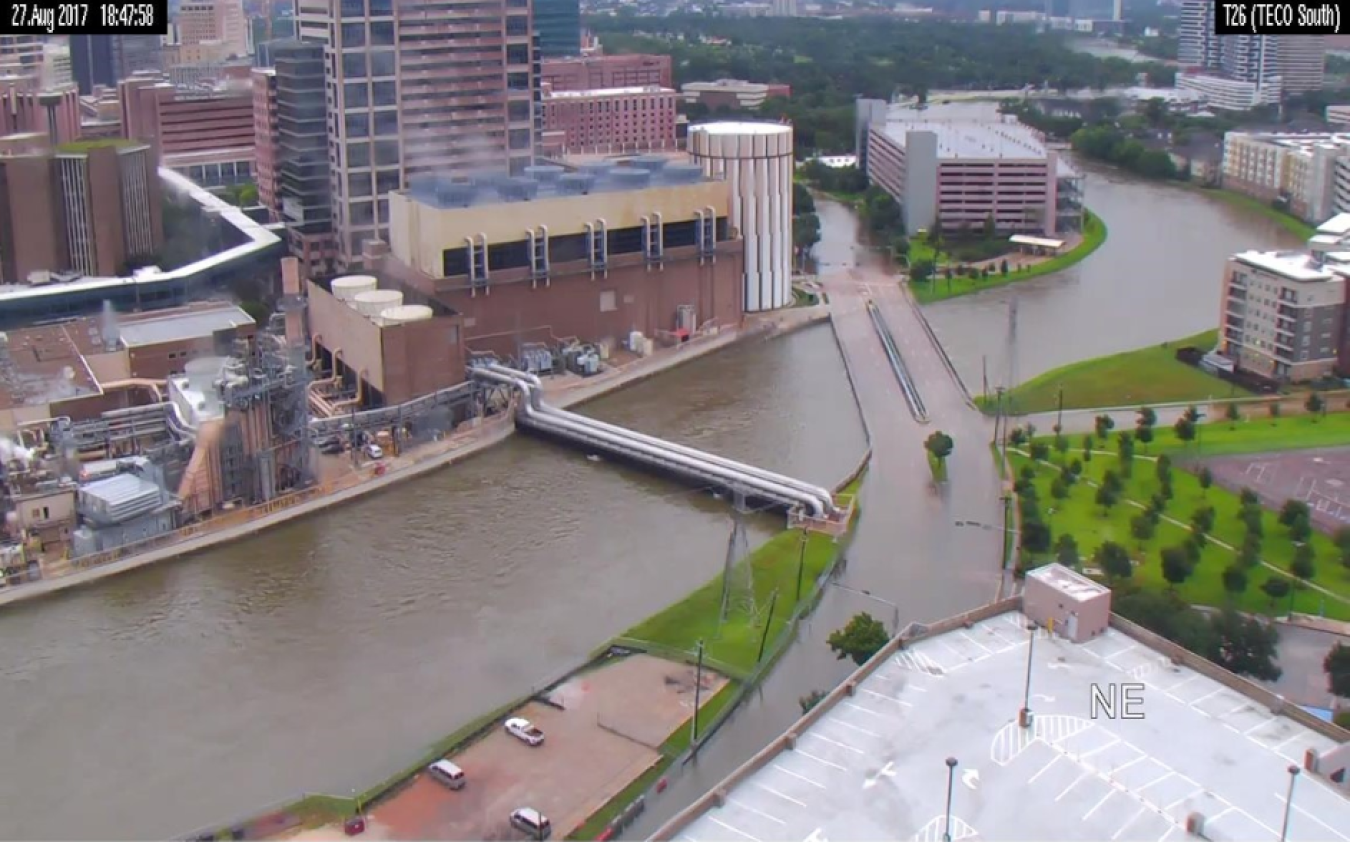Our thoughts and concerns are with all the people affected by natural disasters like the recent hurricanes and storms.
Advanced Manufacturing & Industrial Decarbonization
September 8, 2017
Brays Bayou next to the TECO CHP installation under normal conditions in October 2012.

Brays Bayou next to the TECO CHP installation during flooding caused by Hurricane Harvey in August 2017. (Photo courtesy TECO)
Our thoughts and concerns are with all the people affected by natural disasters like the recent hurricanes and storms. With any major storm, energy reliability and security are major concerns for those in the storm’s path. Medical facilities in particular face significant risks if the power goes out – the ability to use energy for heating and cooling is crucial to patient care, protection of long-term medical research projects, and maintaining living and working conditions within hospitals.
While much of Houston, Texas, and the surrounding areas, were faced with uncertainty as Hurricane Harvey made landfall, the Texas Medical Center – the largest medical center in the world – was able to sustain its air conditioning, refrigeration, heating, sterilization, laundry, and hot water needs throughout the storm thanks to the combined heat and power (CHP) installation operated by Thermal Energy Corp (TECO). CHP is a way to generate on-site electric power and useful thermal energy (heat) from a single fuel source. TECO’s CHP system at the Texas Medical Center uses natural gas to deliver 48 MW of power to provide reliability and security to the 19 million square foot medical campus even in the event of prolonged grid outages.
Even with rising water levels in the Brays Bayou and other areas around the CHP system, the energy infrastructure operated without interruption through the storm. Although the CHP system was designed primarily to increase energy efficiency and reduce energy costs for the medical center, the events of Hurricane Harvey showed that CHP was also a crucial part of the emergency preparedness plan and helped staff at the Texas Medical Center focus on patient care without fear of losing power. The Texas Medical Center includes medical research and care facilities like the University of Texas MD Anderson Cancer Center, Texas Children’s Hospital, and the 16 other institutions.
During its design and construction, the CHP system at the Texas Medical Center received support from the Advance Manufacturing Office through its CHP Technical Assistance Partnerships (CHP TAPs). CHP TAPs work local officials and companies to promote and assist in transforming the market for CHP, waste heat to power, and district energy technologies and concepts throughout the United States. TECO, which operates the CHP system at the Texas Medical Center, is also a partner in the Better Buildings CHP for Resiliency Accelerator which supports CHP solutions to keep critical infrastructure – like hospitals, data centers, research facilities, and utilities – operational and reliable regardless of external events. Public-private partnerships like these help to drive innovative solutions that ensure energy security and reliability to meet the needs of Americans even during catastrophic events like the recent hurricane in Texas.
As was Hurricane Harvey, Hurricane Irma is a powerful and dangerous storm, and so preparedness is essential. Those in its potential path are urged to follow the instructions of state and local authorities.
Learn more about the TECO CHP TAP at Texas Medical Center here.

